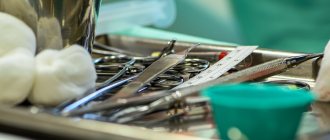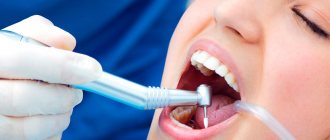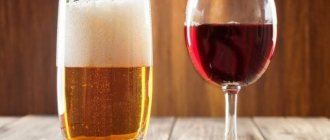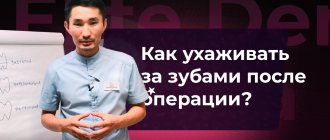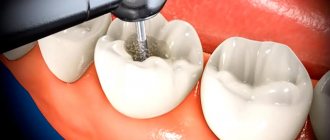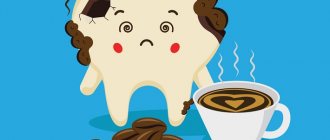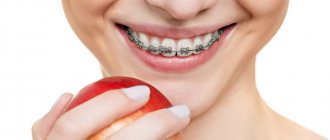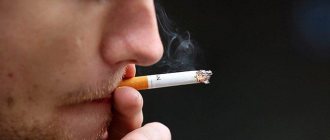What cannot be done and what is not allowed to eat after each ultrasonic teeth cleaning, how long after can one drink coffee, what recommendations do doctors give to patients who have undergone other hygiene procedures? Many people mistakenly believe that once you step outside the dental office, you can sparkle with a snow-white smile and at the same time eat whatever you want. In fact, it is important to maintain a certain time interval during which hard and soft tissues must fully recover after exposure to ultrasound.
There are also general care recommendations. Following these rules will ensure that the effect lasts for a long time.
Why does tartar appear?
There are many reasons for the deposition of hard plaque, including:
- poor teeth cleaning at home;
- incorrectly selected brush and paste of inadequate quality;
- smoking;
- a large amount of soft food in the diet that does not require thorough chewing;
- dysfunction of the thyroid gland;
- uneven teeth and chewing food on only one side of the jaw.
Removing tartar is much more difficult, and it brings much more problems. In order to avoid possible complications in the future, professional teeth cleaning in dental offices by hygienists will help.
Professional teeth cleaning
Professional teeth cleaning is a procedure for mechanical or ultrasonic removal of tartar, plaque and pigmentation from the surfaces of teeth, as well as from hard-to-reach areas of the oral cavity. Hygienic cleaning must be done by everyone, without exception, at least 2 times a year.
But this procedure is especially useful and vital for owners of orthodontic structures in the oral cavity, such as implants, braces, and veneers. For those who wear braces, this procedure is very relevant. Since it is not possible to carry out high-quality teeth cleaning at home.
Professional cleaning is also carried out for those who decide to undergo dental treatment or enamel whitening.
Advantages
Cleansing efficiency.
The ultrasonic system removes tartar with the greatest possible effect without consequences for dental health. In addition, unlike other cleansing methods, ultrasound easily breaks down hard deposits even under the gum. No risk to enamel. Hard stone is difficult to remove mechanically, and it is almost impossible to remove plaque with chemicals without affecting the enamel. Ultrasonic cleaning has no such disadvantages. The system is designed in such a way that it does not directly affect the tooth surface, which significantly reduces the risk of damage.
Whitening effect. After cleaning, many patients who were planning to schedule an appointment for whitening abandon this idea because the teeth become several shades lighter. However, the color of the enamel remains natural, since special bleaching is not performed during the procedure.
Fast and painless. The procedure is painless, does not require special preparation and does not take much time. If the patient has a lot of deposits in the gum line area, the dentist will suggest using topical or local anesthesia with the minimum possible dosage of anesthetic.
Prevention of diseases. As a rule, deposits on teeth can provoke many dental diseases, such as caries, gingivitis or periodontitis. After removing hard deposits and soft plaque, the dentist will be able to correctly assess the condition of the tooth enamel, notice their pathological changes in time and, if necessary, carry out urgent treatment. In addition, ultrasound kills bacteria by delivering an antiseptic solution and the bactericidal effect of cavitation.
Ultrasonic cleaning at the TopSmile clinic
Get an individual consultation with a specialist at the TopSmile clinic
Get acquainted with the service
Contraindications
Teeth brushing in dentistry, as a medical procedure, has a number of contraindications:
- cardiac arrhythmia;
- colds and infectious diseases;
- diabetes;
- pregnancy;
- HIV, AIDS, hepatitis;
- increased sensitivity of teeth or inflammation of gums;
- destruction of enamel;
- childhood and adolescence.
The procedure for cleaning teeth from foreign substances, according to generally accepted standards, is carried out as follows:
- After a thorough examination of the oral cavity, the dentist identifies problem areas in the oral cavity.
- Cleans tartar using a special tool - an ultrasonic scaler. Since tooth enamel is harder than tartar, under the influence of ultrasound
- the stone collapses, but the tooth remains undamaged. Injury to the gums is minimal. For maximum patient comfort, doctors can use anesthesia in the form of special gels or sprays.
- Then pigment spots from tobacco, coffee and other products with a high dye content are removed. They can only be removed using a special device - Air Flow.
- It works by using pressure to push out abrasive materials to effectively clean the surface of your teeth.
- Fluoridation. This makes the enamel harder.
- At the final stage, the surface is polished with rubber brushes using a special paste.
In total, a complete cleaning cycle can take from 20 to 60 minutes.
Smell from the mouth
This phenomenon is primarily associated with the low quality of dental services, when subgingival plaque is not completely cleaned. In addition, some of the causes of unpleasant odor include:
- neglect of recommendations for daily hygiene care;
- insufficient cleaning of dentures (removable and fixed);
- eating raw garlic and onions;
- exacerbation of periodontal inflammatory processes;
- cyst formation;
- pathologies of the salivary glands.
Symptoms often indicate the presence of inflammatory processes in the body. For example, the smell of acetone is characteristic of diabetes. You should also pay attention to the condition of the gastrointestinal tract and upper respiratory tract. Suspicion of gastritis, sinusitis or endocrinological pathology requires immediate consultation with specialized specialists.
The above recommendations should be followed after any type of professional cleaning. It is important to understand that during this period, minor discomfort and increased sensitivity of the teeth are normal. With proper care, after 5-7 days the unpleasant sensations cease to bother you, and the reward is a snow-white smile and a good mood!
Recommendations after professional teeth cleaning
The hygienic cleaning procedure may cause increased sensitivity to cold and hot, and short-term discomfort during cleaning. This is an acceptable side effect. After ultrasonic teeth cleaning, the doctor gives individual recommendations for further actions for 2-3 days.
This plan includes, but is not limited to, customized oral care products. But the general direction of the appointments is as follows:
- purchasing a new toothbrush;
- do not forget to brush your teeth 2 times a day using a paste that reduces enamel sensitivity.
Flaws
Despite these advantages, the procedure has disadvantages:
- when working with the device, it is possible to injure the soft tissues of the oral cavity, so the procedure should only be performed by a highly qualified specialist;
- in some cases it is impossible to remove the stone from all sides;
- For sensitive teeth, local anesthesia will be required.
In addition, ultrasonic teeth cleaning has a number of contraindications.
Note. Sometimes dental clinics use scalers, which, when rotated, can damage tooth enamel. Before you sign up for a procedure, check with the administrator what model of device the dentist will use. If the device is outdated, it is better not to take risks and abandon the procedure.
What can you eat after a professional teeth reading?
You can start eating almost immediately after professional cleaning. But doctors still advise waiting at least 1 hour.
If fluoridation of the dental surface has been carried out, then it is necessary to abstain from food for at least 2 hours.
Anything that does not contain food or natural dyes is allowed to be used in food. Dentists especially recommend eating more solid foods - fruits and vegetables, such as apples, as they reduce the risk of plaque forming on the surface of the teeth.
It is recommended to increase the amount of calcium-rich foods in your diet - milk, cottage cheese, kefir. But after using soft food, it is imperative to brush your teeth, rinse your mouth and use dental floss, since such food will actively clog into hard-to-reach places.
Also, to maintain the effect of brushing your teeth in the first days, it is recommended to drink mainly water, very lightly brewed tea or apple juice, but diluted with water.
Products that you can eat
After such an impressive list of prohibitions, the question arises: what can you eat without fear?
In fact, there are not as few permitted products as it might seem at first glance:
- Dairy products – natural kefir, cottage cheese, yogurt without dyes
- Cheeses
- Fruits: green and yellow apples, pears, white grapes, bananas
- Vegetables: cauliflower and white cabbage, celery, cucumbers, mushrooms, beans
- White meat, fish, seafood, eggs
- White wine is acceptable for alcoholic drinks
- Sweets – white marshmallows, marshmallows, white ice cream
Let's summarize the above:
Following a transparent diet in the first 7-10 days after the whitening procedure will protect the new white color of the enamel from external coloring pigments and allow the result to consolidate. A snow-white smile – isn’t this a worthy reward for such a short restrictive period?
In the future, try to limit the intake of coloring products that contribute to the appearance of unwanted pigmentation of the enamel. Of course, it is impossible to eliminate the entire list of listed undesirable foods from our diet forever, but it would not hurt to make a rule - if you have eaten or drunk any drink from the “prohibited list,” then you need to brush your teeth with a brush and toothpaste as soon as possible, or better yet. immediately after eating.
If you DO NOT like the temporary effect of whitening, you DO NOT want to repeat the procedure every 1-2 years and comply with such restrictions, the best solution would be to install veneers or ultraneers. For a bright, beautiful smile, you will need to install at least 6 veneers on the upper jaw.
What not to eat after a professional teeth reading
In the first 2-3 days after the hygiene procedure, you should completely exclude from your diet foods that irritate your teeth - everything sour, salty, sweet, cold, hot, carbonated drinks, as well as foods containing dyes:
- black and brown dyes are found in tea, coffee, Coca-Cola, Pepsi, cocoa, chocolate, soy sauce and balsamic vinegar, as well as in some berries (blueberries,
- blackberries, blueberries, black currants and black grapes);
- yellow dye is inherent in spices - mustard and curry;
- red and orange colors - red wine, ketchup, all red berries, tomatoes and their juice, beets, carrots, pumpkin and red cabbage;
- as well as all products with non-natural dyes - any carbonated drinks, candies, ice cream.
If it is not possible to give up your coffee addiction, then you can start drinking it after a few hours, but you should dilute it generously with milk and drink it through a straw.
Products that stain enamel
The enemies of your snow-white smile are the most common drinks and foods: tea, coffee, red wine, colored lemonades, berry juice, dark berries, soy sauce, chocolate and others. In addition, any sweets spoil dental health, since sugar creates a good breeding ground for bacteria. They produce acid that destroys enamel. Teeth become yellow and brittle.
So, if you want your smile to be snow-white, watch out for the consumption of these products. Especially if you have recently had a whitening or hygienic cleaning. In this case, you should stick to a white diet. Otherwise, the enamel will quickly return a yellow tint.
When can you smoke after ultrasonic teeth cleaning?
Specialists are strictly prohibited from smoking after the procedure. Since as a result of the procedure, the enamel loses its protective film, the tars from tobacco smoke will penetrate even more actively into the surface layer of the teeth, and they will turn yellow in 2-3 days.
Therefore, before resuming your addiction to a bad habit, you should wait 3-4 days. It is during this period that a new protective layer will appear on the teeth.
If, however, nicotine addiction is very strong, and there is no way to tolerate it, then after each smoking it is necessary to thoroughly brush your teeth.
Alcohol after brushing teeth
Doctors do not make a categorical ban on use. But they still advise you to give up this addiction completely, or wait a few days after the procedure. And they advise you to avoid drinks that contain dyes or cause discomfort (for example, cold drinks). It is worth limiting your use:
- red wines – high content of natural pigments;
- low-alcohol drinks and energy drinks in cans containing unknown chemicals that give very bright colors to liquids;
- Avoid drinking very cold drinks.
Is it possible to drink
Drinking, of course, is not contraindicated. It is important to choose suitable drinks that cannot provoke darkening of hard tissues and inflammation of soft tissues. Pigments in sweet soda, compotes, concentrated juices, fruit drinks, tea and coffee products color cleaned incisors, fangs and molars. Let's figure out what you can and cannot do after professional teeth cleaning: why there is a 2-3 week ban on eating your favorite foods.
Is tea allowed
Black is contraindicated in any form or concentration. As for green, everything is not so clear-cut. It is very useful for the oral cavity, as it helps strengthen enamel, eliminates bacterial flora, and reduces the risk of caries.
At first glance, it seems that a practically colorless liquid cannot lead to coloration. However, in fact, it contains tanning components that provoke yellowness.
Thus, hygienists do not advise drinking any existing varieties of tea for 2-3 weeks.
Is coffee allowed
When researching the question of whether you can eat, smoke or drink after brushing your teeth, the first drinks that come to mind are those containing caffeine. This product is classified as prohibited because it contains a pigment that darkens the enamel. If you don’t have the strength to give up your favorite invigorating energy drink, it’s enough to go without it for a couple of days, but it’s better to abstain throughout the entire recovery period.
If you ignore this advice, the incisors, canines and molars will become gray and take on a shade even darker than they were before the ultrasound. All microscopic cracks, chips and pores are pigmented, and it will be extremely difficult to remove all this from the surfaces.
Some patients can still keep coffee in their diet, but only if they dilute it heavily with milk or cream in advance, cool it to a comfortable room temperature and drink through a straw. After this, it is important to rinse your mouth with clean drinking water or a special mouthwash.
Alcohol
Alcoholic drinks are not a contraindication after professional teeth cleaning; dentists do not express categorical prohibitions. The product does not have a negative effect on cleaned enamel. However, it is important to remember that some of its varieties are undesirable to use.
After cleansing and bleaching, you should not use products with dyes. If they are present, it is better to refrain from drinking. This feature is typical for wine (contains coloring substances of natural origin), low-alcohol cocktails of bright colors. Any alcohol that has been kept in the refrigerator for a long time is also contraindicated.
If you do drink the drink, you must rinse your mouth thoroughly afterwards. It is advisable to use a special rinse aid, but if it is not available, you can take clean drinking water.
Most doctors still recommend abstaining from alcoholic beverages for a couple of days. This will help consolidate the results of cleansing procedures and protect the person from possible negative consequences.
Rules for oral care after brushing
Experts highlight several points for oral care, the observance of which will help maintain and prolong the results obtained:
For one to two weeks, you should use only a soft toothbrush. It is necessary to clean 2 times a day, and if possible, after each meal. After this period, it can be replaced with a medium-hard brush. Which needs to be changed once every 2-3 months. Also, on the advice of a doctor, you should use high-quality toothpaste, priority should be given to toothpastes for sensitive teeth. It is imperative to use additional oral hygiene products. Among them:
- floss;
- irrigators;
- dental brushes.
All this equipment will allow for better cleaning of dental surfaces.
It is imperative to visit a hygienist at least 2 times a year. People wearing braces, implants and other structures should visit the dentist twice as often - 3-4 times a year.
Frequently asked questions from users
How often can you have your teeth cleaned at the dentist?
The standard recommendation is to remove pigmented and mineralized deposits every six months. But the frequency varies depending on the patient's characteristics:
- if a person is scrupulous, carefully monitors hygiene and does not have bad habits, then plaque accumulates more slowly, so cleaning can be done rarely - once every year and a half;
- For smokers, lovers of black tea and strong coffee, professional hygiene is required once every six months;
- for people prone to diseases of teeth and gums, manipulation is carried out every 5-6 months;
- patients with gingivitis and periodontitis come for professional hygiene once every 3-6 months, depending on the condition of the gums and enamel;
- For patients with installed braces, dentures and implants, the procedure is performed every 4-6 months.
Also, professional hygiene is required before a planned pregnancy and orthodontic treatment.
It is recommended to remove pigmented and mineralized deposits every six months
How long after cleaning teeth from tartar can you eat?
There is no direct ban on eating. But it is better to refrain from eating and drinking for 2-3 hours. This is due to two factors:
- after cleaning, the enamel becomes porous, pigments from products are more absorbed into it;
- At the end of professional hygiene, the teeth must be covered with strengthening preparations (fluoridation or remineralization is carried out): you need to wait a couple of hours to allow the compounds to be absorbed and not damage the protective film.
Tip: To avoid hunger or thirst, eat a hearty meal before visiting the dentist.
What can you eat?
For 2-3 weeks after professional cleaning, they adhere to the so-called “white” or “transparent” diet. This type of diet excludes all foods and drinks that can stain dental tissue.
But the diet is not particularly poor. Allowed:
- side dishes: rice, oatmeal, millet, mashed potatoes, pasta;
- meat: any variety, it is advisable to prepare “soft” dishes from it - cutlets, meatballs, stews, etc.;
- white fish;
- soups and broths: white meat, cream soups;
- light vegetables: cabbage, potatoes, radishes, cucumbers, zucchini, white beans;
- neutral fruits: bananas, pears;
- berries: melon, white grapes and currants;
- simple drinks: pure still water, diluted juice from apples or light grapes, lightly brewed green tea;
- fermented milk products: cottage cheese, milk, kefir, fermented baked milk, cheese, yogurt (without food coloring);
- nuts;
- bread: white, rye, bran, gray;
- White mushrooms;
- eggs;
- sweets: honey, marshmallows without glaze, light marshmallows and marmalade, white chocolate, baked goods made from white flour, butter or sour cream.
2-3 weeks after professional cleaning adhere to a “white” diet
Eat foods and drinks at a neutral temperature: slightly warmer than room temperature. They do not cause hypersensitivity and do not irritate the gums.
What's not allowed?
During the first 2-3 weeks after professional hygiene, restrictions are imposed on all foods and drinks containing natural or artificial colors:
- drinks: coffee, black tea, red juices, compotes, fruit drinks, cocoa, hot chocolate, any soda;
- soups: tomato, with buckwheat, borscht (red and green);
- side dishes: buckwheat;
- black bread – it contains a lot of concentrated malt, which gives the baked goods a black-brown color;
- berries: blueberries, currants, mulberries, strawberries, raspberries, red grapes, blueberries, blackberries, pomegranate, cranberries, watermelon;
- vegetables: beets, carrots, pumpkin, tomatoes, red cabbage;
- fruits: orange, lemon, kiwi, grapefruit, plum, cherry, sweet cherry;
- offal: liver, heart;
- sauces: soy, ketchup, mustard, curry, etc.;
- sweets: bitter and milk chocolate, lollipops, jam, glazed cheese curds, ice cream, baked goods and confectionery with dyes, jelly or colored creams;
- seasonings: paprika, red pepper, cinnamon, nutmeg.
Avoid berries at first
Tip: If you eat something that contains pigments, rinse your mouth and brush your teeth. This will reduce the coloring effect of the product.
Also prohibited are “irritating” foods:
- excessively hard: crackers, drying, tough meat, chops, steaks, chips;
- viscous and sticky: toffee, caramel, molasses;
- acid-containing: apples, citrus fruits, juices;
- cold;
- hot;
- spicy.
Can I drink coffee?
Like any “coloring” drink, coffee is prohibited after professional cleaning. You will have to give it up for at least a day, or better yet, for the entire rehabilitation period (2-3 weeks).
It is better to give up coffee for 2-3 weeks
If you neglect this recommendation, your teeth will quickly stain and become even darker than they were before hygienic cleaning. Coffee pigments quickly penetrate into microcracks and pores in the enamel, and firmly adhere to the surface.
Coffee lovers who cannot live for several hours without an aromatic drink are advised to first dilute the coffee with milk, cool it to room temperature and drink it through a straw. And then be sure to rinse your mouth and brush your teeth.
Smoking?
Smoking, even in normal situations, harms teeth in a way that no other product or drink can. And after professional hygiene, resins accumulate even more intensely around the necks of crowns and on their surface. In addition, hot smoke dries out the mucous membrane, leading to redness and bleeding of the gums.
Therefore, a strict smoking ban is imposed in the first 3-5 days. It applies to regular cigarettes, cigars, pipes, vapes and hookahs.
However, in practice, not a single heavy smoker follows this advice: it is unrealistic to last even a day without a cigarette. Therefore, exclude them at least in the first 3-4 hours, and after each smoke break, brush your teeth.
You can't smoke for the first 3-5 days
Can I drink green tea?
At first glance, it seems that green tea cannot stain enamel, because it is almost transparent. But in fact, each variety contains tannins, which give the surface of the teeth a yellowish tint.
Therefore, dental hygienists do not recommend drinking any type of tea: green, white, herbal. True, their coloring properties are still less pronounced than those of the black variety. So once a day you can treat yourself to a glass of lightly brewed drink.
Alcohol after cleansing
There are no direct contraindications for alcohol-containing drinks. But it is better to abstain from drinking alcohol for the first day.
The type of alcohol is also taken into account. So, as a rule, you should not drink alcoholic beverages with dyes for 2-3 weeks. This:
- red and rose wines;
- cognac;
- liquor;
- low alcohol drinkers;
- whiskey;
- beer;
- gin;
- vermouth.
You are allowed to drink white wine, vodka, light martinis, and tequila. But after them, you usually need to brush your teeth and use a mouthwash.
Do not drink alcoholic beverages with dyes for 2-3 weeks
Why does my breath smell even after brushing my teeth?
An unpleasant odor (halitosis) usually occurs when there is a large accumulation of soft and hard deposits around the crowns. Therefore, the main reason for bad breath after professional hygiene is poor quality cleaning.
Typically, the dentist does not clean subgingival plaque well. It accumulates in periodontal pockets (5 mm deep) during periodontitis and periodontal disease. Such pigmented and mineralized deposits are difficult to detect, and their cleaning requires high professionalism and the use of special equipment.
In addition, it will take several visits to completely remove the stone and polish the necks of the teeth. And after professional hygiene, anti-inflammatory therapy is mandatory.
But if the gums are healthy and there are no complaints about the procedure, the following factors may be the causes of halitosis:
- poor hygiene: if the patient continues to brush his teeth irregularly, the effect of professional cleaning will quickly fade away;
- insufficient cleaning of dentures, especially removable ones: if the dentist cleans fixed dentures along with all teeth, then patients are responsible for maintaining the cleanliness of removable dentures;
- daily consumption of foul-smelling foods: garlic, onions, fish, etc.;
- inflammatory processes in teeth: deep carious cavities, cysts, pulpitis;
- pathologies of the gastrointestinal tract: stomach, liver, kidneys;
- upper respiratory tract diseases: sinusitis; frontal sinusitis, tonsillitis;
- diabetes mellitus – you will smell acetone from your breath;
- taking certain medications: antibiotics, antihistamines, to normalize blood pressure, antidepressants, etc.
Another reason is xerostomia. This is pathological dryness of the mucous membranes due to insufficient saliva production. It not only softens and moisturizes the oral cavity, but also helps get rid of bacteria, germs and heal wounds.
If bad breath persists after professional hygiene, consult a therapist, gastroenterologist, or pulmonologist
With xerostomia, saliva is almost not produced, which means that pathogenic microorganisms multiply more intensively. Their toxins, waste products and decay provoke bad breath.
Advice: If bad breath persists after professional hygiene, consult a doctor: therapist, dentist, gastroenterologist, pulmonologist. He will determine the exact cause and prescribe appropriate treatment.
Is professional teeth cleaning at home possible?
It is unrealistic to achieve an effect even slightly similar to the result from professional cleaning on your own. Clinics use special devices, tools and hygiene products that efficiently and carefully remove plaque, practically without damaging the enamel and gums.
At home, you can only improve personal hygiene and remove minor deposits. The following tools will help with this:
- Professional toothbrushes. Although mechanical brushes are not fundamentally different from each other, there are products that clean plaque better: with a special arrangement of bristles, rubberized inserts, surfaces for cleaning the tongue, etc.
- Professional pastes. Cheap products like “Colgate”, “Pearl”, “Silka”, “Blend-a-med” will not work. Take a closer look at the companies “Lacalut”, “Sensodyne”, “President”. For better plaque removal, look for highly abrasive products: gels with an RDA index of 80-100 are suitable for everyday care; for intensive whitening 1-2 times a week - with an RDA of 150-200. Such pastes are good at removing minor plaque by breaking down pigment plaques with abrasives, but they will not cope with massive deposits.
- Electric and ultrasonic toothbrushes. They break up plaque and stone better, and in addition they also polish the enamel.
- Irrigators. These are devices that clean the interdental spaces using a water jet. The devices will be especially useful for people with dentures, braces and implants.
It is forbidden to remove plaque and tartar from teeth using improvised means: tweezers, a nail file, scissors, a knife, etc. It may be possible to partially remove the deposits. But the enamel and mucous membrane will inevitably be severely damaged. As a result, caries can occur in an initially healthy unit.
It is unrealistic to achieve the effect of professional cleaning on your own.
Folk remedies for cleaning teeth, benefits and harms
Proponents of “natural medicines” criticize professional comprehensive oral care products. They claim that you can maintain hygiene, remove deposits and even get rid of diseases using folk remedies.
That's bullshit. There is no conspiracy of pharmaceutical companies to produce “harmful” toothpastes and brushes: all products undergo clinical testing, and no one will maliciously produce products that undermine health.
But home cleaning methods are at best useless, and at worst they will greatly harm your teeth. Individually or in combination, the following folk remedies for removing plaque are ineffective or harmful:
- soda;
- hydrogen peroxide;
- Activated carbon;
- citrus juice and peel;
- chalk, ash and any other abrasive;
- powdered milk;
- Coconut oil;
- calamus root;
- rose hip;
- salt – table and sea salt;
- clay;
- sulfur;
- honey;
- essential oils.
Teeth brushing is mandatory for pregnant women
Is it possible to brush your teeth during pregnancy?
During gestation, serious physical, anatomical and hormonal changes occur in a woman’s body. They, among other things, negatively affect the condition of the oral cavity. Because of this, pregnant women more often experience gingivitis, caries, and plaque accumulates more abundantly.
Therefore, brushing teeth for pregnant women is mandatory. However, there are several nuances:
- It is best to carry out professional hygiene at the stage of pregnancy planning - this will help prevent dental diseases during pregnancy and eliminate the risk to the child;
- the best time for professional cleaning during pregnancy is the second trimester: in the first weeks, any intervention can affect the formation of the baby, and in the last weeks it can provoke premature birth;
- safe types of professional hygiene for expectant mothers: sandblasting, Air Flow, ultrasound, laser, but mechanical and chemical methods should be abandoned;
- Without any problems, you can clean plaque only from the supragingival part of the teeth, but stone from periodontal pockets is removed only according to strict indications: with this type of professional hygiene, anesthesia is used, which can affect the condition of the baby and mother.
Professional oral cleaning is the best prevention of dental and gum diseases and a safe whitening method. But if you do not follow the rules of care, the effect of the procedure will disappear in a matter of days.
